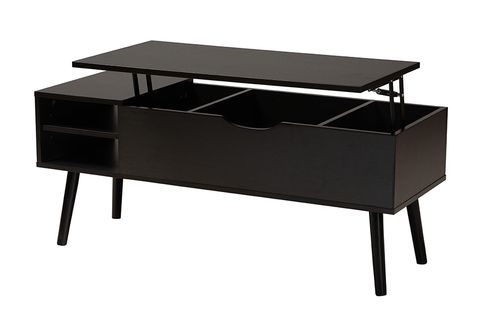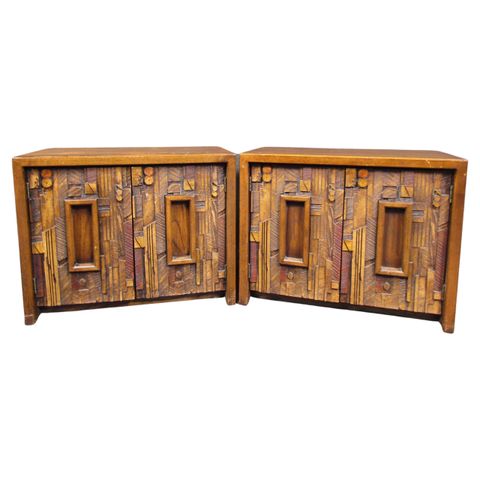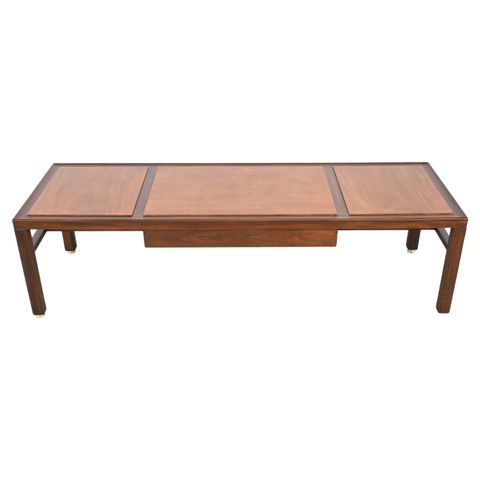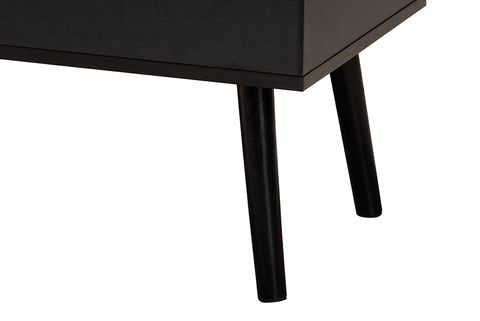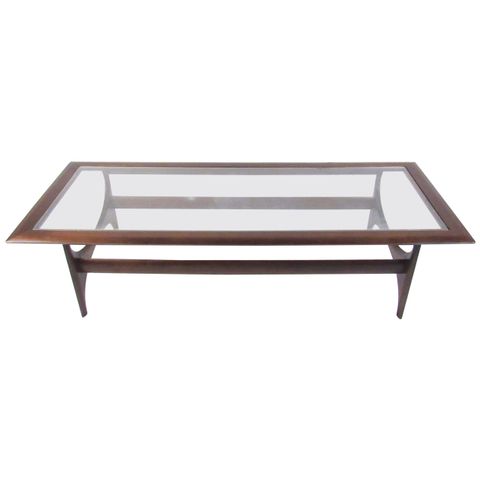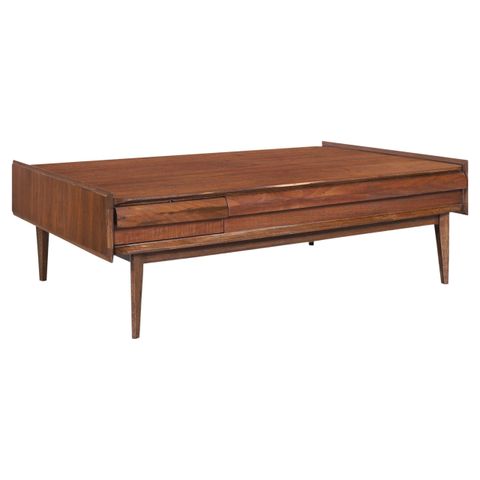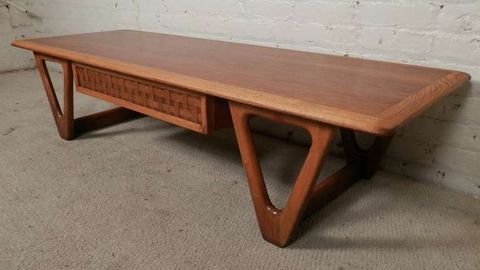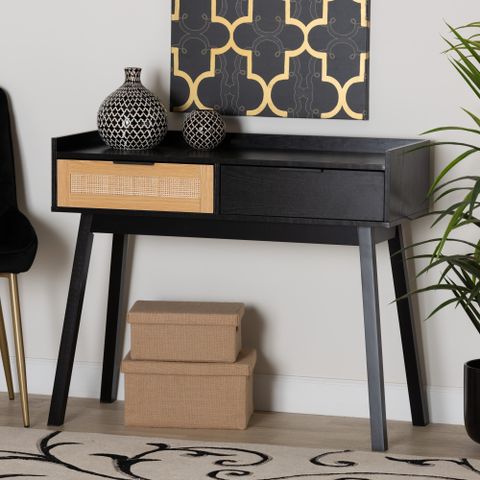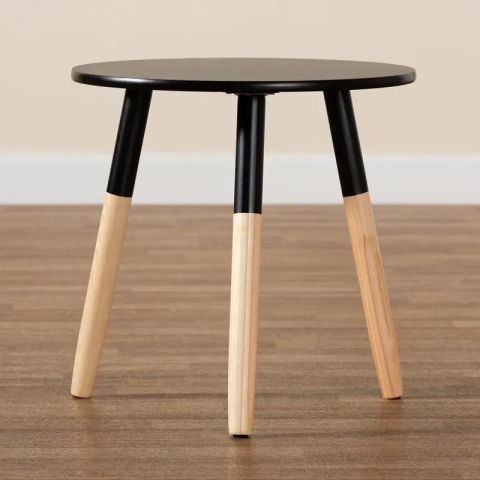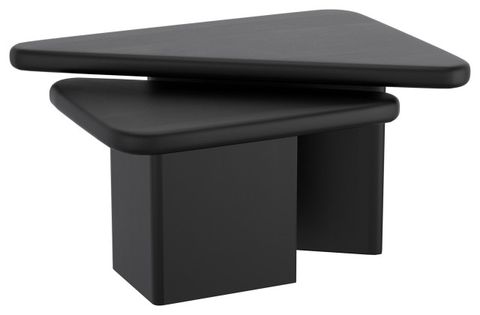In the ever-evolving world of interior design, some pieces transcend fleeting trends. The mid-century modern 2-tone coffee table is one such item. It’s not just a surface to rest your mug or stack your magazines; it’s a conversation starter, a piece of art, and a testament to a design era that continues to captivate. But what exactly makes these tables so special, and why do they continue to grace our living rooms with such enduring appeal?
Picture this: a clean-lined coffee table, perhaps crafted from warm teak and accented with a lighter walnut, or a striking contrast of dark wood and a pop of color. This is the essence of the mid-century modern 2-tone coffee table. Emerging from the mid-20th century, a period celebrated for its innovative and functional design, these tables embody a unique aesthetic. They bridge the gap between the organic and the geometric, the practical and the visually stunning. If you’re looking to inject some character and sophisticated vintage vibes into your space, you’ve come to the right place. Let’s dive into what makes these pieces so irresistible.
What Defines Mid-Century Modern Design?
Before we get too deep into the two-tone aspect, it’s helpful to understand the broader mid-century modern (MCM) movement. Think post-World War II America, a time of optimism and a desire for new beginnings. Designers embraced simplicity, functionality, and organic shapes. They often used natural materials like wood, alongside new materials like plastic and metal. Key characteristics include clean lines, minimal ornamentation, tapered legs, and a blend of indoor and outdoor living principles. It was about creating furniture that was both beautiful and livable, accessible and sophisticated. Lots of people connect with its honest approach to design.
The Magic of Two Tones
Now, let’s talk about the ‘2-tone’ aspect. This is where the real visual interest often lies. MCM designers loved to play with contrasts, and combining two different wood finishes or a wood with a contrasting material was a common and effective way to do this. Imagine a table with a darker walnut base and a lighter oak top, or a sleek teak frame with a painted laminate surface in a bold color. This duality adds depth and a dynamic quality to the piece. It breaks up the visual monotony and makes the table a focal point without being overwhelming. It’s like a well-composed musical piece, with different notes creating harmony and interest. This approach also allowed for a bit more flexibility when it came to matching other furniture in your room. You could pick out either of the tones to tie things together.
Materials and Craftsmanship: Built to Last
Authentic mid-century modern furniture, including coffee tables, was often built with quality and longevity in mind. You’ll frequently find these tables made from solid wood like teak, walnut, oak, and mahogany. The craftsmanship is usually superb, with attention paid to joinery and finishing. Even pieces made with veneers were done so skillfully, often on high-quality plywood. The two-tone effect might be achieved through different wood species, contrasting veneers, or even by using painted finishes on certain sections. These tables weren’t just designed to look good; they were meant to be functional, durable pieces of furniture that could withstand daily use for decades. This commitment to quality is a big part of their enduring appeal today. When you find one, it often feels like a treasure.
Versatility in Design: Fitting Your Space
One of the surprising strengths of a mid-century modern 2-tone coffee table is its adaptability. While it has a distinct style, its clean lines and the inherent balance of its two-tone design mean it doesn’t feel out of place in a variety of interior settings. It can anchor a room with a full MCM aesthetic, of course. But it also works wonderfully in more contemporary spaces, adding warmth and a touch of retro character. Think about pairing one with a minimalist sofa, or using it to break up the sleekness of a modern sectional. The contrast it offers can actually enhance other design styles, preventing a room from feeling too uniform or sterile. It’s all about how you integrate it. It can be the star or a supporting player, depending on your vision.
Finding Your Perfect Piece: Tips for Buyers
So, you’re convinced. Where do you find one of these gems? Your best bet is often vintage and antique stores, flea markets, and online marketplaces specializing in MCM furniture. When you’re shopping, keep a few things in mind. Firstly, check the condition. Look for sturdy construction, minimal damage to the wood (scratches and minor wear are often part of the charm, but major structural issues are a no-go). Examine the finish – is it original, or has it been refinished? Both can be lovely, but it affects the authenticity and value. Pay attention to the wood types and the way the two tones are combined. Does it speak to you? Does it fit the scale of your room? Don’t be afraid to ask questions about the piece’s history or origin if possible. Sometimes, a little research can uncover a truly special find.
Styling Your Two-Tone Treasure
Once you’ve acquired your mid-century modern 2-tone coffee table, the fun of styling begins. The table itself is a statement, so it doesn’t need a lot of clutter. A simple tray with a couple of coasters and a small decorative item, like a ceramic vase or a stack of well-chosen books, often does the trick. You can use the two tones as inspiration for your accent colors in the room. For example, if your table has a darker wood and a lighter blond wood, you could bring in cushions or throws in shades that complement either of those tones. Don’t be afraid to mix and match textures too – a woven rug, a plush throw, and the smooth wood of the table can create a rich and inviting sensory experience. It’s about creating a cohesive and comfortable living space that reflects your personal style.
Mid-century modern 2-tone coffee tables offer a compelling blend of history, design innovation, and practical beauty. They represent an era when furniture was crafted with care and designed to enhance everyday living. Their unique two-tone appearance adds a distinctive flair that can elevate any room, while their solid construction ensures they can be cherished for years to come. Whether you’re a seasoned collector or just beginning to explore the world of vintage design, these tables are a fantastic way to bring timeless charm and sophisticated style into your home. They are more than just furniture; they are pieces of design history ready to make a new chapter in your living space.

